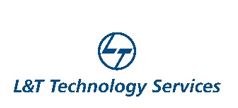Client Profile: The numerous applications of machine vision and use cases for Image Processing are leading to a paradigm shift and a wave of opportunities in the semiconductor world. The client, a leading imaging  solutions company, was looking to build a camera and image capture technology for a diverse range of industrial applications. LTTS’ (L&T Technology Services) proven credentials in image processing, application-specific integrated circuit (ASIC) design, new product development (NPD), testing, and verification made it a partner of choice when the client decided to build an innovative imaging platform that involved designing a System on Chip (SoC), optimized for price and performance.
solutions company, was looking to build a camera and image capture technology for a diverse range of industrial applications. LTTS’ (L&T Technology Services) proven credentials in image processing, application-specific integrated circuit (ASIC) design, new product development (NPD), testing, and verification made it a partner of choice when the client decided to build an innovative imaging platform that involved designing a System on Chip (SoC), optimized for price and performance.
Client’s Brief: Stating the challenges, the client wanted LTTS to do the following:
- Design a camera SoC to survive in ambient conditions, such as high temperature, shock, vibration and yet achieve maximum durability and reliability
- Control end product costs without compromising image qualities and frame rates
- Resolve the debugging and design partitioning challenges arising from integration of 100+ million gates with 400 macros leading to greater architectural complexity of 100+ million gates with 400 macros
LTTS’ Solution: LTTS provided manufacturing support and took complete ownership from chip design specification, microarchitecture and register transfer level (RTL) design, digital and analog IP integration to functional verification and testing for the SoC. LTTS also:
- Executed and implemented the chip plans, SoC plans, and IT plans using a low power process methodology for 40+ image processing algorithms
- Attained processing efficiency of the highest level with calculations for the die size, pin count, and power/memory/performance/sensor requirements
- Developed Field Programmable Gate Arrays (FPGA) prototype, pre-silicon device firmware, and post-silicon validation framework to validate full camera SoC and major interfaces
- Provided end-to-end validation including Design for Test (DFT), Engineering Validation Test (EVT), Product Validation Test (PVT,) full functional validation with the host (driver), and 100+ camera sensors
Tangible Benefits: The benefits included cost optimization and enhanced productivity. Citing a few quantifiable benefits and statistics:
- Compact, single-board industrial-grade SoC design capable of achieving as much as 66 percent cost optimization in comparison to the standard FPGA-based machine vision camera
- Enabled ~33 percent greater earnings by faster time-to-market of end product
- Successfully managed design risks to deliver a scalable, configurable, and feature-rich (power and performance) efficient system design
- Increased productivity using LTTS’ proprietary IPs USB and MIPI CSI2 RX and TX
- Attained high accuracy triggering and USB machine vision property in the end product




